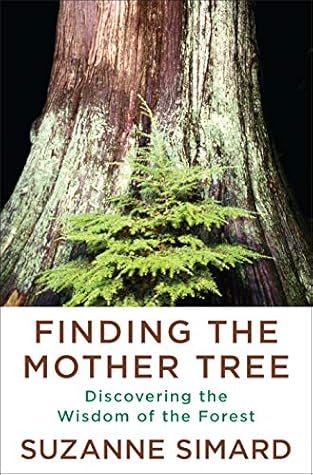shading a seedling and flicked it into the shrubs. Using a makeshift envelope fashioned from drafting paper, I collected the seedling’s yellow needles. I was grateful to have my own desk in an alcove set off from the map tables and boisterous offices where men made deals and negotiated timber prices and logging costs; decided what patches of forest to cut next; awarded contracts like banner ribbons at a track meet. In my tiny space, I could work on the plantation problems in a secluded peace. Maybe the seedling’s symptoms would be easy to find in the reference books, since yellowing can be
...more
This highlight has been truncated due to consecutive passage length restrictions.
I picked up a piece of bark shading a seedling and flicked it into the shrubs. Using a makeshift envelope fashioned from drafting paper, I collected the seedling’s yellow needles. I was grateful to have my own desk in an alcove set off from the map tables and boisterous offices where men made deals and negotiated timber prices and logging costs; decided what patches of forest to cut next; awarded contracts like banner ribbons at a track meet. In my tiny space, I could work on the plantation problems in a secluded peace. Maybe the seedling’s symptoms would be easy to find in the reference books, since yellowing can be caused by myriad problems. I tried to find any seedlings that were healthy, but to no avail. What was triggering the sickness? Without a correct diagnosis, the replacement seedlings would likely suffer too. I kicked myself for glossing over the problem, taking the easy way out for the company. The plantation was a mess. Ted would want to know if we were failing to meet the government requirements for reforestation at this site, because not succeeding meant a financial loss. He was focused on meeting the basic regeneration regulations at minimal cost, but I didn’t even know what to suggest. I pulled another spruce seedling from its planting hole, wondering if the answer might be in the roots, not the needles. They had been buried tightly in the granular soil, where it was still moist in late summer. Perfect planting job. The forest floor scraped away, the planting hole plunged into the damp mineral earth below. Just as instructed. By the book. I inserted the roots back into the hole and checked another seedling. And another. Every one of them packed exactly right in a slit made by a shovel and backfilled to eliminate the air gaps, but the root plugs looked embalmed, as if they’d been shoved into a tomb. Not a single root seemed to get what it was supposed to do. None was sprouting new white tips to forage in the ground. The roots were coarse, black, and plunging straight to nowhere. The seedlings shed yellow needles because they were starving for something. There was an utter, maddening disconnect between the roots and the soil. By chance a healthy subalpine fir had regenerated from a seed nearby, and I uprooted it to compare. Unlike the planted spruce, which I’d plucked like a carrot out of the soil, these sprawling fir roots were anchored so tightly that I had to plant both feet on either side of the stem and pull with all my might. The roots finally ripped out of the earth and—a parting shot—sent me stumbling. The deepest root tips had refused to unglue from the soil, no doubt in protest. But I brushed the humus and loose dirt off the torn roots I’d claimed, pulled out my water bottle, and rinsed off the remaining crumbs. Some of the root ends were like the fine tips of needles.


